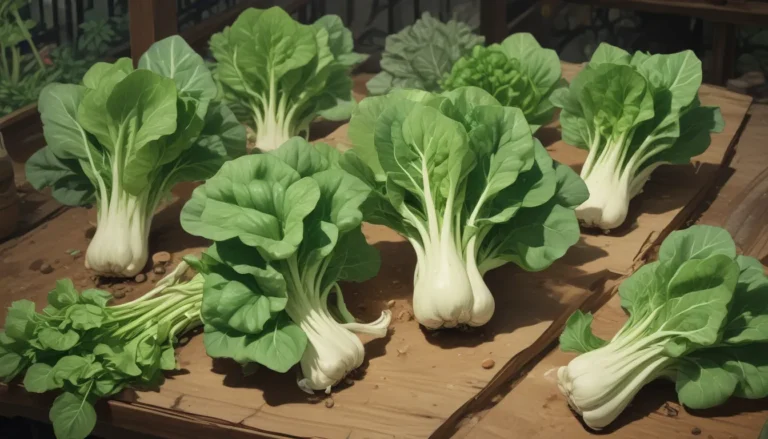An In-depth Guide to Growing and Caring for Oregon Grape Holly

When it comes to choosing foundation shrubs for your yard, there are countless options to consider. But what if you could have a shrub that is evergreen, boasts beautiful spring flowers, and offers stunning fall colors all in one? Enter Oregon grape holly.
These woody shrubs, also known as Berberis spp. or Mahonia, offer a myriad of features that make them a popular choice for landscapers. From their holly-like leaves to their fragrant yellow flowers and edible berries, Oregon grape holly has a lot to offer.
In this comprehensive guide, we’ll explore everything you need to know about growing and caring for Oregon grape holly. From cultivation and propagation to pruning, maintenance, and species selection, we’ve got you covered. So, if you’re ready to transform your landscape with this versatile shrub, keep reading to learn more!
What Is Oregon Grape Holly?
Oregon grape holly is a group of woody shrubs that come in various species, with different growth habits and features. From low-growing ground covers to towering upright shrubs, these plants are known for their distinctive holly-like leaves and bright yellow flowers that bloom in big clusters.
One of the standout features of Oregon grape holly is its edible berries, which can range in color from blue and black to red, resembling grapes, hence the common name. Additionally, these plants offer beautiful autumn foliage, adding a splash of color to your landscape.
Cultivation and History
Native to Asia and North America, Oregon grape holly belongs to the Berberidaceae family, along with other plants like barberries and mayapples. Originally classified under the Mahonia genus, many taxonomists now place these plants in the Berberis genus, though some still use the Mahonia classification.
With a long history of human use, Oregon grape holly has been utilized by Indigenous peoples for food, dye, and medicinal purposes. The roots and stems contain berberine, a compound with medicinal properties used in herbal medicine for treating various conditions.
When cultivating Oregon grape holly, it’s essential to consider your plant’s specific needs, including sun exposure, water requirements, and soil preferences. These shrubs thrive in well-drained loamy soil and can be grown in USDA Hardiness Zones 4b to 10b, depending on the species.
Oregon Grape Holly Propagation
If you’re looking to propagate Oregon grape holly, you have several options to choose from, depending on the species you’re growing. For example, B. aquifolium, the most common type in garden nurseries, can be propagated from cuttings or seeds.
From Seed:
To propagate Oregon grape holly from seeds, start by collecting fresh fruit and removing the pulp before sowing the clean seeds. Plant them in the fall or after a cold stratification period in the spring, and ensure the growing area is clear of weeds and enriched with compost.
From Cuttings:
For propagation from cuttings, take softwood growth in late spring or early summer, treat them with rooting hormone, and place them in a sand and vermiculite mixture. Keep the cuttings in filtered sunlight, and transplant them in the fall once they have rooted.
Transplanting:
Once you have potted plants ready for transplanting, prepare the planting area by clearing weeds and digging a hole that accommodates the root ball. Ensure the shrub is positioned correctly in the hole, backfill with soil and compost, and water thoroughly. Maintain a watering schedule based on your climate and gradually reduce water as the plant establishes.
How to Grow Oregon Grape Holly
When it comes to caring for Oregon grape holly, there are a few key factors to consider. Most species, like B. aquifolium, thrive in full sun to part shade and well-drained loamy soil. These shrubs are fairly drought-tolerant once established but may need more water in direct sunlight.
To grow Oregon grape holly successfully, follow these growing tips:
- Grow in full sun to part shade.
- Provide more water for specimens grown in full sun.
- Locate in well-drained, loamy soils.
By following these guidelines and monitoring your plant’s water and sunlight needs, you can ensure healthy growth and abundant blooms.
Pruning and Maintenance
While Oregon grape holly typically requires minimal pruning, some gardeners choose to rejuvenate plants by trimming back old or damaged stems. When pruning, avoid cutting more than a quarter of the plant’s stems per year and conduct this task in late winter.
Additionally, watch out for suckers and remove them as needed to maintain plant health. Fertilizing practices depend on the species and regional requirements, with compost serving as an excellent all-purpose fertilizer.
To maintain soil moisture and temperature, apply mulch around the shrubs, and water as needed, especially in hot and dry conditions.
Oregon Grape Holly Species and Cultivars to Select
Oregon grape holly offers a diverse range of species and cultivars to choose from, each with unique characteristics and growth habits. Whether you prefer native species or cultivars tailored to specific needs, there’s an Oregon grape holly for every landscape.
Some popular options include:
- Aquifolium: Also known as tall Oregon grape, this species boasts glossy leaves, bright yellow flowers, and blue to black berries. It thrives in Zones 5 to 9 and is great for borders and screens.
- Fremontii: Known as Fremont’s mahonia, this species is native to the southwestern US and produces yellow flowers and red, orange, or yellow fruits. It’s drought-tolerant and ideal for fall color.
- Nervosa: Dull Oregon grape, as it’s commonly known, is a Pacific Northwest native with oblong leaves and yellow flowers. It thrives in Zones 5 to 9 and has low moisture needs once established.
- Repens: Creeping Oregon grape is a low-growing species native to western North America, with blue to black fruits and moderate drought tolerance. It’s perfect for ground covers and erosion control.
- Soft Caress: A cultivar of B. eurybracteata, ‘Soft Caress’ features fine bluish-green leaves and canelike growth, reaching four to five feet tall. It thrives in Zones 7 to 10 and produces bluish-black fruits.
Selecting the right species or cultivar for your landscape will depend on your preferences, growing conditions, and aesthetic goals. Choose wisely to ensure a thriving Oregon grape holly in your garden.
Managing Pests and Disease
While Oregon grape holly is relatively resilient to pests and diseases, it’s essential to monitor and address any issues that may arise. Common pests to watch out for include mealybugs, scale, and thrips, which can feed on your plant’s foliage and cause damage.
In addition, keep an eye out for diseases like leaf spot, powdery mildew, and rust, which can affect plant health and appearance. Prevention is key to managing these issues, so be sure to maintain good airflow, proper spacing, and avoid overhead watering to minimize disease risk.
If pests or diseases do appear, there are organic treatments available to control these issues and prevent further damage. Monitor your plants regularly, and take prompt action to protect your Oregon grape holly from harm.
Best Uses of Oregon Grape Holly
Oregon grape holly offers a wide range of uses in the home landscape, from edible landscaping to defensive plantings and erosion control. These versatile shrubs can be incorporated as foundation plantings, hedges, screens, or ground covers, depending on your needs.
With their attractive foliage, colorful berries, and wildlife benefits, Oregon grape holly adds both aesthetic appeal and functional value to any garden. Whether you’re looking to attract pollinators, stabilize slopes, or create a vibrant border, these shrubs can meet your landscaping goals.
To enhance your Oregon grape holly plantings, consider companion plants like perennials, shrubs, and trees that complement their growth habits and visual appeal. By selecting suitable companions, you can create a harmonious landscape that thrives with diversity and beauty.
In conclusion, Oregon grape holly is a remarkable shrub that offers a wealth of benefits for gardeners and wildlife alike. By selecting the right species, providing proper care, and monitoring for pests and diseases, you can enjoy the beauty and functionality of these plants in your landscape.
A Mahonia by Any Other Name
In the end, whether you call them Oregon grape holly, Berberis, or Mahonia, these plants offer a unique blend of beauty, utility, and resilience. With their edible berries, striking foliage, and versatile growth habits, Oregon grape holly is a standout choice for any garden.
What’s your favorite aspect of Oregon grape holly? Are you growing them for their berries, fall color, or wildlife benefits? Share your thoughts in the comments below and let us know how you’re using these plants in your landscape. Whether you’re a fan of their colorful leaves or fragrant flowers, Oregon grape holly has something to offer every gardener.
Interested in exploring more woody shrubs for fall color and beyond? Check out our related articles on American beautyberry, oakleaf hydrangea, and buttonbush for more inspiration and ideas for your landscape.
By following these tips and guidance, you can cultivate vibrant and healthy Oregon grape holly in your garden. Whether you’re a novice gardener or a seasoned pro, these versatile shrubs offer something for everyone. From their colorful foliage and fragrant flowers to their edible berries and wildlife benefits, Oregon grape holly is a must-have addition to any landscape. So, roll up your sleeves, grab your gardening tools, and start growing your very own Oregon grape holly today!





